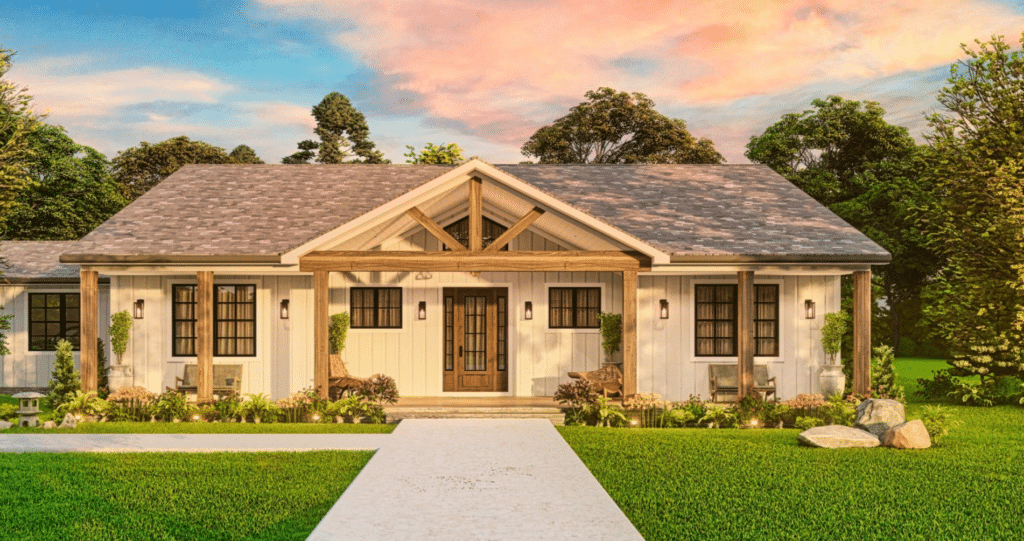Barndominiums Vs. Traditional Residences: a Thorough Contrast of Lifestyle and Functionality
The choice in between barndominiums and typical homes includes numerous elements, consisting of way of living choices and practical demands. Barndominiums are defined by their open designs and versatility, typically appealing to those that focus on common living and versatility. In contrast, typical homes use a more organized setting, which might better serve family members looking for personal privacy and a feeling of background. As we analyze the cost effects and ecological considerations, it comes to be clear that the option extends past simple visual appeals and performance; it invites a much deeper exploration of what absolutely defines a home.
Review of Barndominiums
Barndominiums, a novel housing pattern getting appeal throughout different areas, mix the rustic appeal of barn-style design with the performance of contemporary living rooms. These one-of-a-kind structures usually include a steel or wood framework, combining open layout and high ceilings with energy-efficient features. Often situated on expansive country residential or commercial properties, barndominiums use house owners the chance to delight in a peaceful lifestyle while providing ample room for numerous activities.
The flexibility of barndominiums extends past their visual appeal; they can act as both living quarters and useful areas for pastimes, workshops, and even tiny organizations. Their adaptive design permits simple personalization, accommodating varied family members requirements and preferences. Lots of proprietors appreciate the reduced upkeep requirements linked with steel exterior siding and roof covering, adding to long-term durability.

Attributes of Traditional Homes
Highlighting classic design and comfort, traditional homes are characterized by their distinctive architectural designs, which commonly mirror historic impacts and local looks. Usual features include balanced exteriors, gabled roof coverings, and a focus on workmanship, causing a cozy and welcoming atmosphere.
Standard homes frequently include aspects such as crown molding, wainscoting, and hardwood floor covering, improving their traditional allure. They generally include several areas with specified objectives, promoting family members interaction while enabling privacy. click here. The format frequently consists of official living and dining areas, which are helpful to entertaining visitors and holding family gatherings
Exterior materials such as brick, timber, or stone are often made use of, adding to sturdiness and a sense of durability. Barndominium repair. Furthermore, several traditional homes are designed with front decks or stoops, promoting a feeling of community and link with the area
Landscaping plays a considerable role in traditional home style, with well-kept gardens and pathways that boost aesthetic charm - view now. On the whole, typical homes personify a sense of fond memories and security, interesting those that value heritage and an extra structured living setting
Price Contrast
Generally, an expense comparison between barndominiums and typical homes exposes considerable differences in building expenses and general investment. Barndominiums, frequently constructed from steel or steel frameworks, normally incur lower product and labor costs than traditional homes constructed from wood and brick. The simplified design of barndominiums can equate to lowered construction times, additionally decreasing labor costs and accelerating occupancy.
Usually, the cost per square foot for a barndominium varies from $100 to $150, while standard homes can vary extensively, generally dropping between $150 and $300 per square foot, depending on area, products, and design intricacy. This cost variation makes barndominiums an appealing choice for budget-conscious purchasers seeking larger home without sacrificing quality.
Furthermore, barndominiums may bring about long-lasting financial savings with reduced maintenance prices, energy effectiveness, and insurance prices. Their sturdy building materials commonly require less maintenance in time contrasted to traditional homes. It is vital to consider that while preliminary prices might be lower for barndominiums, the final investment will certainly additionally depend on specific customization and preferred features, which can influence the total expense in both real estate kinds.
Way Of Living and Space Considerations
When thinking about way of life and room, barndominiums supply an unique flexibility that interest a range of house owners. These hybrid frameworks integrate property coping with useful area, usually including open layout that can be adjusted to fit private requirements. This versatility is especially beneficial for households or individuals seeking a customized living environment, enabling varied usages such as home workplaces, workshops, or entertainment locations.

In addition, the aesthetic allure of barndominiums can cater to both rustic and modern tastes, making them a versatile option for various style preferences (Barndominium builder). Ultimately, the option in between a barndominium and a standard home often pivots on how well each choice straightens with the property owner's way of living goals and spatial needs, highlighting the significance of taking into consideration personal concerns in the decision-making procedure
Environmental Effect and Sustainability
The ecological impact and sustainability of barndominiums present engaging benefits contrasted to conventional homes. Largely constructed from steel and other long lasting products, barndominiums are frequently developed making use of recycled resources, decreasing the need for brand-new products and reducing waste. Their style commonly emphasizes open spaces, which can cause reduced energy usage for home heating and air conditioning contrasted to traditional homes with more segmented designs.
In addition, barndominiums can incorporate sustainable features such as solar panels, click resources rainwater harvesting systems, and advanced insulation methods, improving their power effectiveness. The convenience of their layout enables house owners to incorporate these modern technologies extra seamlessly than in many traditional homes, which may require extensive retrofitting.
Additionally, barndominiums often call for fewer resources for building and construction due to their easier, much more reliable layouts (read more). On the whole, barndominiums stand for a forward-thinking strategy to lasting living, lining up with modern environmental top priorities.
Verdict
In recap, the choice in between barndominiums and traditional homes pivots on individual way of life choices and practical needs. Barndominiums, with their open layouts and lasting products, cater to those looking for flexibility and common living.